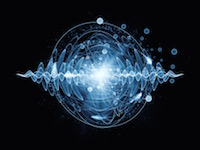
- Speaker: Howon Kim (Institute for Solide State Physics, University of Tokyo)
- Date: Wednesday, May 25, 2016, at 17:00
- Place: Jeongho Seminar Room
The proximity and Josephson effects are well-known phenomenon and widely used terms in superconductivity. Due to the recent advances in fabrication techniques those phenomenon has been extensively studied to give a new insight to the superconductor-based device applications. Nevertheless, many of these works addressed macroscopic properties of the samples, and thus local information is still missing. In this talk, I will discuss how we can realize the proximity effect and Josephson effect using scanning tunneling microscope at a nanometer scale.
In the first part of the talk, I will address how the local surface structure can influence on the proximity effect at the interface between superconducting two-dimensional Pb islands and a single-atomic-layer metal by performing local tunneling spectroscopy. From the spectroscopic map taken around the Pb-based S/N interface, we observed the gap at the Fermi energy, reminiscent of the superconducting gap, propagating into the metal region (proximity effect) and its depth decaying with the distance from the interface. Additionally, we observed that the propagation of the superconducting correalation is terminated by the steps of the substrate and enhancement of the gap-depth in the area between the interface and the step edge. The experimental results are compared with the results of quasi-classical theory based on the Usadel equation. [1]
The second part of the talk, I will discuss about atomic-scale evolution of conduction mechanism by means of atomic-scale S-S junctions. Using a cryogenic scanning tunneling microscope, we investigated the evolution of the number of conduction channels and their transmission probabilities from the tunneling to the atomic point contact regime through the analysis of the subharmonic gap structures created by multiple Andreev reflection. In our local conductance measurements between superconducting Pb islands on Si(111) or Ge(111) and Pb layers on the end of PtIr tip apex, we observed evolution of not only the normal-state conductance [2] but also a zero-bias peak (ZBP) from tunnel to atomic contact, which corresponds to the Josephson current, with a decrease in the tip-substrate distance on the different atomic sites on the surface crystalline lattice of the substrate. Our measurements demonstrate a direct correlation between the conduction channels and the atomic geometry of the point contact, which is crucial for understanding the transport mechanism of ultimately confined conducting structures [3].
References
[1] H. Kim et al, arXiv:1401.2602 (2014).
[2] H. Kim and Y. Hasegawa, Phys Rev Lett 114, 206801 (2015).
[3] H. Kim and Y. Hasegawa, arXiv:1506.05528 (2015).
